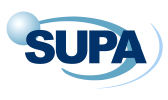If you continue browsing this website, you agree to our policies:
x
Contact Us | Privacy Policy | Legal Notices | SUPA logo | SUPA is an alliance of Scottish Universities that have come together to form a research alliance in Physics.
The administration office for SUPA is located at Kelvin Building Room 227, University Avenue, Glasgow G12 8QQ. University of Glasgow is a registered Scottish charity: Registration Number SC004401.
